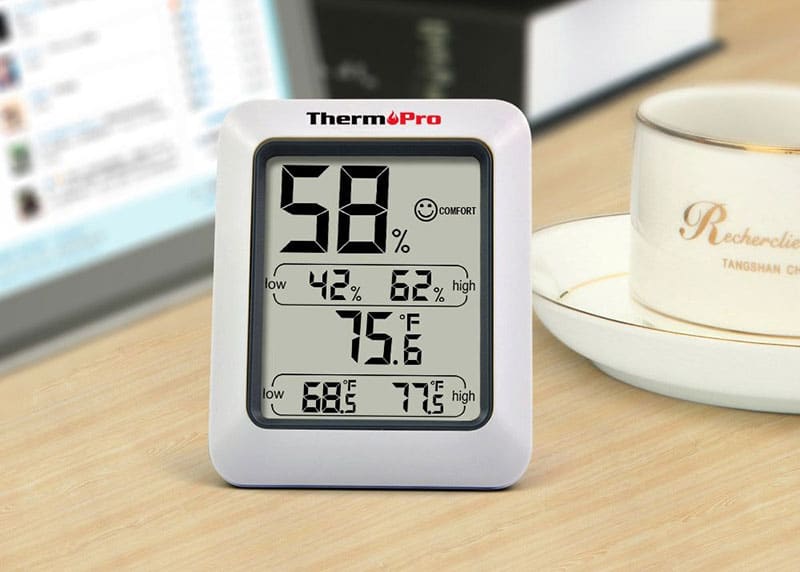The customer service team is always listening, taking notes, and quantifying complaints to ensure our products are continually improved. Due to selling directly to you, the customer, via Amazon, we can use product reviews to help us improve our existing products or help further development of new products.
Table of Contents
The humidity levels in your house play a crucial role in your health. However, there are times, especially during the winter, when the humidity levels in your home are low. Such conditions bring about several issues, including respiratory problems. For this reason, you need to find effective ways to increase humidity. Most people usually get a humidifier but like most electric equipment, they will experience some issues. So, is your humidifier not increasing humidity?
Well, that should not worry you. This is because you can rely on other ways to humidify your house. Read on to find out more about these effective tricks.
Dry Air Impacts for Health
By now, you’re probably wondering why it is so important to regulate the humidity levels in your home. To begin with, when the humidity is low, it results to dry air. Turns out, dry air has adverse effects on your health. Dry air will cause respiratory issues such as nose and throat irritation. It also causes eye irritation and results to dry and flaky skin. See? That’s why you need to know how to increase humidity in body.

But that’s just one side of the story. Low humidity levels will also deteriorate the quality of wood furniture in your home. They also create excellent conditions for specific germs to thrive. As such, you need to keep your home’s humidity levels in check.
What Is Considered a Low Humidity Level at Home?
Humidity is defined as the amount of water vapor in the air and its level varies. The humidity levels in your home will be lower during winter and higher during summer.
The ideal humidity level in your house should range from 30% to 50%. Anything below that is considered low humidity, and it could cause health problems.
Ways to Increase Indoor Humidity
Now, it’s time to dive into the most effective ways of increasing indoor humidity. Each of these methods works differently, but they achieve similar results. There is no need to worry about how long to raise humidity in house a specific method takes. The aim is to regulate humidity levels.
Let’s have a look at some of these tactics.
1. Get a humidifier
One of the proven ways to increase indoor humidity is by using a humidifier. Basically, a humidifier is a device that is easy to operate, and it increases the humidity levels indoors effectively. The device includes a tank, which you’re supposed to fill up with water. The water in the humidifier gets released into the air, creating a cool and warm mist. The tiny particles that are released are what you inhale.
Want to know the best part? Humidifiers are economically priced. However, the low price is for the small-sized models. You can also find larger models that could even cover the entire floor in your home. So, you should get one depending on the size of your home.
You must also ensure to clean and empty your humidifier often to prevent the growth of mold and other contaminants.
2. Hang your laundry indoors
Do you use a dryer every time you do your laundry? Well, it’s about time you consider hanging your clothes on a drying rack instead. By doing so, you’ll increase the humidity levels in your home.
If you’re wondering how this works, here’s how. The moisture from your wet clothes will evaporate into the air, improving the humidity levels in your home.
But here’s the kicker. This method is very affordable. All you need to do is purchase a drying rack, which goes for a cheap price. Better yet, you get to save on your electricity bill.
3. Get some houseplants
Most people think that houseplants are only meant to improve a house’s aesthetic value. However, they serve other purposes. For starters, house plants help to purify the air. Moreover, they act as an effective natural humidifiers.
The plants usually absorb the moisture through their roots, which is then circulated through the stems to reach the leaves. From here, the leaves release moisture into the air, thus improving your indoor humidity.
However, as the plants release the moisture into the air, they eventually dry up and die. Want to know how to increase humidity for plants? Simple. Water them regularly. That way, your houseplant will not die.
But here’s the deal, you have to select your plants carefully. Get those that’ll purify and humidify your air effectively. According to a reliable study, spider plant is one of the best plants for this purpose.
4. Leave your shower door open
You might have noticed how much steam accumulates inside your bathroom as you shower. Now, you should not let all that steam go to waste. Instead, leave your shower door open, so that this steam can escape into the other parts of your house to increase indoor humidity.
5. Leave your bathtub full
If you prefer the tub to the shower, you can take advantage of a full tub to increase the humidity levels. Look, when you’re done with your hot bath, don’t be in a rush to drain your tub. The hot water will start to cool. Before it cools down, however, some water evaporates gradually into the air, thus humidifying your room.
6. Leave your kitchen sink full
Did you know that you can use your kitchen sink for more than washing utensils? Well, you can use it to increase the humidity levels in your house. How so? Once you’re done washing the dishes, don’t drain the water immediately. Instead, leave the sink full for the water to cool. As it cools, some moisture will escape into the air to humidify the house.
7. Put bowls of water near heat sources
Apart from air conditioning your house, you can use your HVAC system to increase indoor humidity. So, how does this work? Simple. Place bowls or dishes of water – both metal and ceramic, on top of your HVAC register. The warm air from the register will heat the water, which will then evaporate to humidify the room.
8. Boil water and cook on your stove regularly
A majority of homeowners prefer to heat up water using the microwave and cook using the oven. However, if you need to increase indoor humidity, you need to start using your stovetop more often.
When you’re cooking, the moisture from your pot will evaporate into the air, thus increasing its humidity levels. It’s also the opinion of most cooks that food cooked on the stove tastes much better. So, why don’t you try it?
How to Get Indoor Humidity Reading
Needless to say, it’s hard to determine the humidity levels in your home using the naked eye. The most you can do to determine the levels is to check for condensation and fog accumulating on your windows. You can also see an accumulation of mold on your walls. These methods, however, only indicate high humidity levels.

What about low humidity? Well, you can tell this when the paint has cracked, or when your woodwork is damaged.
However, these methods won’t tell you the exact indoor humidity reading. To get this reading, you need a good device such as the ThermoPro indoor hygrometer and thermometer. The device will allow you to keep track of the amount of moisture in your home.
Interestingly, it has an LCD display that indicates the exact readings.
But wait, there’s more. The Hygrometer and Thermometer also allows you to calculate the temperature change between specific periods. With such a device, you’ll clearly know the level of humidity in your home. If the humidity levels are below 30%, then you can employ the most effective tips to increase indoor humidity.
Sum Up
Nobody wants to live inside an uncomfortable house. Among the factors that contribute to the discomfort are poor humidity levels. That’s why it is so important for you to regulate indoor humidity. The recommended levels are between 30% and 50%.
Anything below that could result in health problems such as nose, throat, and eye irritation. Dry air could also cause dry skin. Fortunately, you can rely on some of the tips mentioned in this post to increase indoor humidity.
Before employing any of the above methods, however, you need to know the exact humidity readings in your home in order to regulate it accordingly. If you’re looking to acquire a hygrometer for this purpose, you can’t go wrong with the ThermoPro indoor hygrometer and thermometer.









